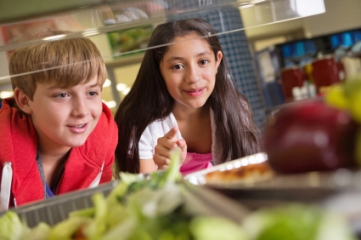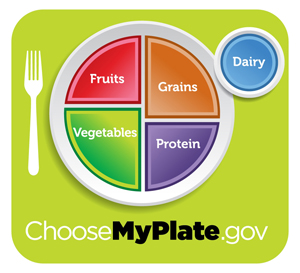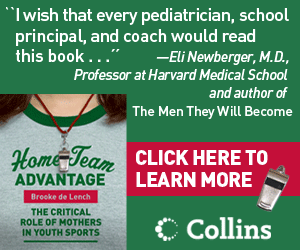Sending parents a weekly Nutrition Report Card (NRC) via email listing their child's school lunch food choices could be a feasible and inexpensive tool to improving child nutrition, says a Cornell University pilot study.[1]
Reseachers re-configured the keyboards of smart cash registers, compurized point of sale (POS) systems already utilized by most U.S. schools to record student lunch purchases and maintain account balances, to add three virtual keys in order to track selection of fruit/vegetable items, starchy sides (e.g. tater-tots and French fries), white milk, flavored milk, and a la carte items (e.g. cookies, chips, ice cream). They then tracked purchase data for the 35 students voluntarily enrolled by their parents in the study, sending parents a weekly email, comparing their choices to the 1,460 students in the control group, and measuring whether their choices changed over time.

After five weeks, the data obtained from the POS showed that students purchased half as many cookies as they had been purchasing, selected fruits and vegetables more frequently, and flavored milk less frequently, although the latter two differences were not statistically significant. Changes in ice cream and chip purchases were not significantly affected.
Adding keys to generate detailed NRCs added only 16 seconds of staff time per 100 students by the end of the study period, and required about 30 minutes of staff time each week to process data, generate report cards, check quality, and send emails to parents.
In open-ended interviews with some of the parents after the five-week study period, researchers found that, after receiving nutrition report cards, some parents adjusted family dinner meals to include more nutritious food, others used the opportunity to discuss the importance of health and nutrition with their kids, and some learned why the child's cafeteria money account was being depleted so rapidly.
Preliminary but promising
"This pilot study underscores that a nutrition report card is feasible and efficient. Although the results are preliminary, they suggest that [nutrition report cards] may be helpful in nudging children toward more healthy, less expensive options and away from less healthy, more expensive ones, and ... do so at little cost to the school district," writes lead author Brian Wansink, John S. Dyson Professor of Marketing at the Dyson School of Applied Economics and Management at Cornell.
Wansink and his colleagues, however, urged caution in interpreting the results because the parents selected their child to participate (e.g. a so-called "convenience sample") so that the differences between the treatment and control groups may have been due to differences in the types of families that would opt into a NRC and those who would not.
If proven effective in a larger-scale randomized trial, the study said the NRC could be:
- easy and cost-effective for schools to implement because minimal programing would be required to reconfigure POS systems in order to output student lunch data and communicate with parents via e-mail;
- scalable: increasing the number of NRCs a school sends would require little, if any, additional time to administer because data processing, report card generation, and email sending are all automated; and
- interactive: the NRC could engage parents in their child's process of making food purchasing decisions at school, which the study's authors suggested, "could be especially beneficial for younger children, who are learning to make independent food decisions and can be helped and guided by concerned parents."

The researchersnoted two concerns:
- the possible psychological impact of observing and reporting students eating behaviors to parents, creating discomfort in some students.
- the possibility that students might strategically respond to the NRCs focus on healthy food items taken, such as fruits and vegetables, either by taking more such items but not actually eating them (thus undermining effectiveness and increasing school lunch costs) or by finding other ways to acquire less healthy items, such as from vending machines or school stores.
Poor Nutrition
Despite the importance of a healthy diet as a key component of child health and development, studies show that many American children have poor diets, consuming too many calories, too few vitamins and minerals, and too few fruits and vegetables.
In 2011, the USDA's MyPlate replaced its outdated and much-maligned Food Pyramid, with the colorful quarters of the plate - green for vegetables, red for fruits, orange for grains, and purple for protein - aimed at nudging Americans away from meals dominated by meat and starch and towards meals made up mostly of plant-based foods.
1. Wansik B, Just DR, Patterson RW, Smith LE. Nutrition Report Cards: An Opportunity to Improve School Lunch Selection. PLoS One 2013:8(10):e72008. doi:10.1371/journal.pone.0072008.









